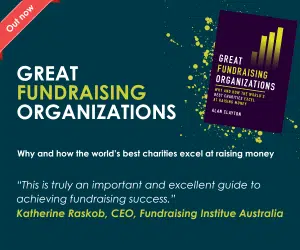Charity marketing and the power of the post
Emily Travis, Market Development Manager, Royal Mail, explains why the post continues to offer an essential tool for fundraisers, whether for direct mail or supporter magazines.
Marketing presents a thorny issue for many charities. On one hand the charity sector is incredibly competitive with hundreds of worthy causes striving to connect with donors and build long term sponsorships, and charity marketing is one of the natural methods to build awareness of the cause. On the other, charities have to be incredibly careful not to be seen to be spending large amounts of money on advertising, lest donors believe organisations are being profligate with donations.
To this end, mail has proved to be an extremely effective – and flexible – way to reach donors. We are also seeing new applications of mail, linking in with digital channels. To take a recent example, Save The Children ran a ‘thank you’ campaign through Proximity London to its valued sponsors at the end of 2006. It posted out a DVD of footage filmed by the volunteers on the ground at projects funded by donors and giving the children themselves a chance to express what a difference the money from Save the Children had made and how their lives have been changed. The charity requested recipients send the DVD back to them, so they could then send it on elsewhere and recycle the disks.
Such was the response to the direct mail campaign that not only were most of the DVDs returned to the charity, but they also received a number of ‘thank you’ letters themselves, detailing how recipients had valued being able to see how their money was being used to help children around the globe.
And it’s not just donors who can be targeted through the post. Charities need also to communicate with influencers on a preventative basis. An example is The British Heart Foundation’s Food for Thought Campaign, where a pizza box full of unappetising images of fast food was sent to teachers across the UK to educate children about the dangers of obesity. Research shows that as a result of the campaign children went home armed with the images and statistics and even educated their parents about healthy eating.
Customer magazines are also proving to be a valuable communications tool for the third sector. Not only can they be produced very cost-efficiently, but the customer magazines answer a number of marketing objectives. The Association of Publishing Agencies (APA), the trade body for customer publishing, has found that customer magazines are not only able to raise awareness, but engender loyalty, as well as providing general information.
Most importantly however they engage a reader’s attention as they are informative and entertaining. APA research has shown that readers spend on average 25 minutes with a customer title. In an age when time is becoming increasingly valuable and it is difficult for organisations to connect meaningfully with their audiences, this ability to engage is a key factor in the ongoing success of the customer publishing industry.
Charity customer magazines now account for eight per cent of the total customer magazine market, and it’s easy to see why. Many organisations want to communicate regularly with their supporters to keep donors updated on new activities and demonstrate what donated funds are achieving.
This regular contact also encourages continued support for the charity, keeping the cause front of mind. While customer magazines tend to be less glossy than their commercial counterparts and produced less frequently to reign in costs, they are no less effective a route to communicating charity news to recipients. A customer magazine is not simply a newsletter – it taps into the power of magazine publishing – providing the reader with entertaining editorial alongside the news, activities and details on charitable giving.
For example, NSPCC runs a magazine entitled Your Family which was named Most Effective Non-retail Consumer Publication at last year’s APA Awards. Judges felt that the magazine effectively engages its audiences and cements the brand positioning of the NSPCC whilst utilising the format of a women’s weekly to promote good parenting through lifestyle features – a further example of how charities need to communicate on a preventative basis.
NSPCC currently distributes its magazine through retail stores. However, many customer magazines are delivered through the post directly to recipients. This reduces the reliance on the right target audience choosing to pick up the magazine, and careful targeting ensures it gets into the right hands first time.
This direct relationship also means that a charity can show it actively cares about its supporters post-donation as every magazine is individually addressed, adding a personal touch to the marketing process, which TV advertising and other broadcast media simply can’t achieve.
As Royal Mail can deliver across the UK, no donor, or even potential supporter if a charity is on a recruitment drive, is out of reach, and the customer title can be integrated along with other marketing practices such as direct mail in a regional or national campaign.
Mintel recently predicted that the customer publishing industry will be worth over £1bn by 2011, and it’s easy to see why. Many companies across a range of different industries have been persuaded as to the value of the medium by its ability to leverage the power of the magazine and engage with readers on a level unmatched by other media. In this respect the third sector is no exception given the difficulty in getting the message across and maintaining donor relationships. As such both the post and the customer magazine look likely to play a useful role in charity marketing for a long time to come.
Emily Travis is Market Development Manager at Royal Mail
Advertisement




